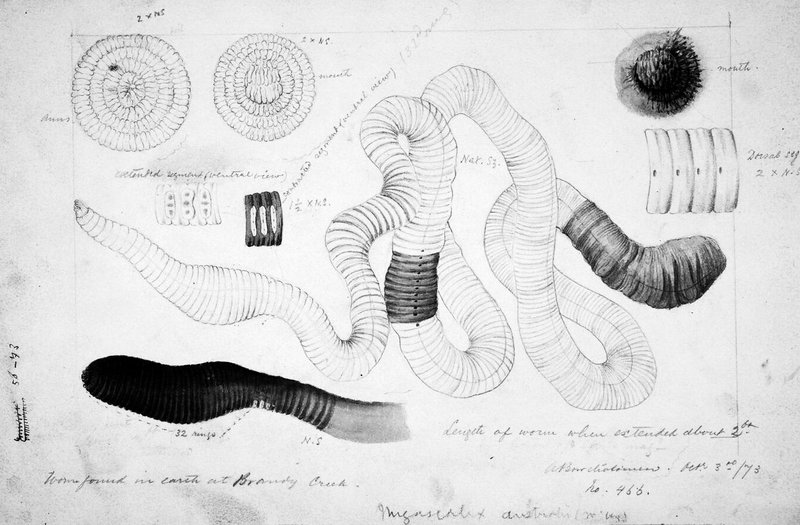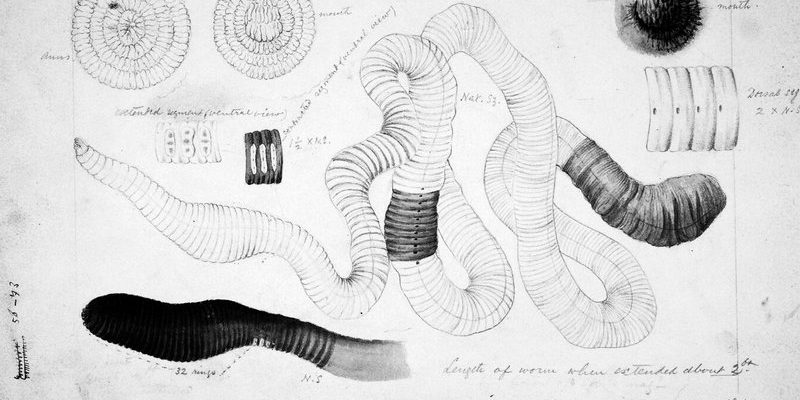
Honestly, spotting one of these iconic earthworms in the wild can feel a bit like a treasure hunt. It’s not just about size; it’s also about understanding where they live and how they behave. So, if you’re curious about how to identify the Giant Gippsland Earthworm and what’s special about its habitat, you’re in the right place! Let’s dive into this unique world of earthworms together.
Where Do Giant Gippsland Earthworms Live?
Giant Gippsland Earthworms are native to the Gippsland region of Victoria, Australia. They thrive in damp, temperate environments, primarily found in the rich, fertile soils of the area. These worms prefer *heavy clay soils*, which provide the perfect mix of moisture retention and nutrients.
You might be wondering why they chose these specific regions. Well, like most organisms, they have adapted to their habitat over time. The clay helps them stay hydrated, while the organic matter found in the soil provides them with food. So, when you’re looking for these remarkable earthworms, keep your eyes peeled in areas that have lush vegetation, like *woodlands or pastures*.
During rainy seasons, you might see them wriggling on the surface, but they usually prefer to stay underground. So, if you’re looking for a Giant Gippsland Earthworm, consider bringing a shovel or a trowel to dig a little deeper into the soil, especially after it rains.
How to Spot a Giant Gippsland Earthworm
Identifying a Giant Gippsland Earthworm isn’t just about its size. While they can grow quite long, you also want to look for distinct features that set them apart from other worms. For starters, these earthworms have a *thick, segmented body* with a bulbous clitellum—the swollen section of the worm.
The skin of the Giant Gippsland Earthworm is often a *dusky color*, ranging from lavender to dark brown. This coloration helps them blend into their environment, providing some camouflage from predators. When you see one, it’s a bit like spotting a mythical creature—it’s not everyday you come across something that looks so unique!
Plus, if you dig one up, you might notice a strong, earthy scent. This is common with earthworms, but the Giant Gippsland tends to have a more pronounced smell due to the organic matter in its diet. If you catch a whiff of something particularly earthy, you may just be on the right track!
Behavior and Movement
Understanding the behavior of the Giant Gippsland Earthworm can also aid in identification. Unlike some other worms that might be quick to retract into their burrows, the Giant Gippsland is known to be more sluggish. They prefer to slowly navigate through their underground tunnels, which can sometimes be quite expansive.
You might notice that they surface during *wet conditions*, especially after heavy rains. This is often when they are most visible. However, they are also known for their ability to move through soil by contracting and expanding their bodies, a bit like how a balloon behaves when you squeeze it.
When you dig them up, don’t be surprised if they twirl and twist rather than squirm away. This unique movement can help you identify them as a Giant Gippsland Earthworm, as other worms usually don’t have the same milder demeanor.
Understanding Their Role in the Ecosystem
Giant Gippsland Earthworms play a crucial role in their ecosystem. They are often referred to as *ecosystem engineers* because they help to improve soil quality. By burrowing through the earth, they aerate the soil and promote airflow, which is vital for plant roots to thrive.
Why does this matter? Healthy soil supports a healthy ecosystem. These earthworms break down organic matter, contributing to nutrient cycling and ensuring that plants have the food they need to grow. Essentially, they’re doing all the hard work to keep the ground fertile and rich in nutrients.
Additionally, their burrows provide a habitat for other organisms, creating a bustling community beneath the surface. So, when you spot a Giant Gippsland Earthworm, remember that you’re witnessing a small piece of a much larger puzzle, one that supports both plant and animal life.
Conservation Status and Protection
Recognizing the importance of the Giant Gippsland Earthworm goes beyond mere curiosity. These fascinating creatures are considered *vulnerable* due to habitat loss and degradation. As urban development expands, their natural habitats are increasingly at risk.
Efforts are being made to protect their environment and raise awareness about their ecological significance. For example, conservation groups work tirelessly to promote sustainable land management practices that benefit both farmers and wildlife. If you’re ever wandering through Gippsland, consider joining in on local conservation activities or simply spreading the word about these amazing worms.
By understanding their role and challenges, we can all contribute to preserving their habitat. The next time you come across a Giant Gippsland Earthworm, take a moment to appreciate its beauty and the vital part it plays in the ecosystem.
Fun Facts About Giant Gippsland Earthworms
Now that you’re familiar with what a Giant Gippsland Earthworm looks like and their habitat, let’s wrap up with some fun facts that might surprise you:
- They can live for up to *10 years* in the wild!
- Their burrows can stretch several meters deep, providing a complex network underground.
- Some locals have nicknamed them “Gippsland Giants” due to their impressive size.
- They produce a special mucous that helps keep their skin moist—crucial for their survival.
These tidbits make these worms even more fascinating, don’t you think? Knowing these facts can help spark interest in conservation and a love for these remarkable creatures.
Identifying a Giant Gippsland Earthworm in its natural habitat can be an exciting adventure. With their impressive size, unique features, and vital role in the ecosystem, they truly are fascinating beings. Remember to look for their damp, clay-rich soil environments, and keep your eyes peeled for their bulbous clitellum and earthy scent.
As you continue to explore the habitats of these gentle giants, take the time to appreciate their contributions to nature. Every earthworm you encounter is a reminder of the intricate web of life that thrives beneath our feet. So, next time you find yourself in Gippsland, keep an eye out for these remarkable worms, and you just might discover the wonder of the Giant Gippsland Earthworm!

